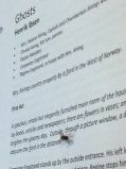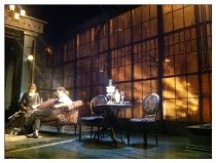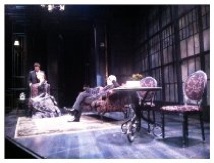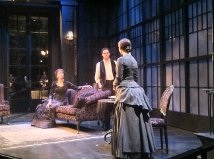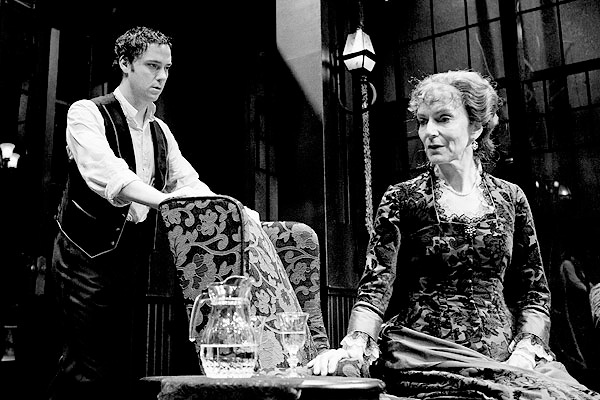Workbook: Ghosts
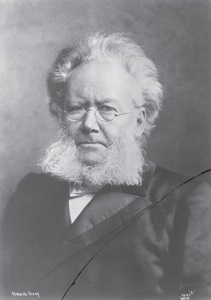
The stern old grandfather of modern theatre himself, Henrik Ibsen.
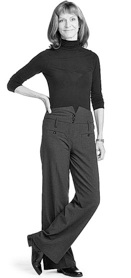
Soulpepper favorite, Nancy Palk takes on the demanding role of Mrs. Alving. Previously, we have worked with Nancy in The Government Inspector and Blithe Spirit. Far right, Dana Osborne costume preliminary for Mrs. Alving. Below right, a model built from technical drawings for construction. The set features thin rods as part of the structure to create the image of the set disappearing as it pushes down toward the audience, complicated by limited space for storage and rep-ing with another show
Ideas, images, sketches from our production of Ibsens Ghosts at Soulpepper

As Ken likes to sketch out renderings on his ipad, we have included one of his preliminaries, left. This will be our fourth production at the Baillie in the Young Centre. Ken has done a couple more in that space, Faith Healer with Gina Wilkinson and Glengarry Glen Ross with David Storch. Now that Soulpepper is running shows in rep it presents new challenges for set designs which need to be struck and stored in an hour. This will be our first time working with Gregory Prest, left, who plays young Osvald Alving, whose inheritance from his father includes syphillis. We know, now, that the disease is not hereditary, but it hardly diminishes the powerful political and social metaphor of disease, as Susan Sontag or any fan of Dawn of the Dead will tell you.
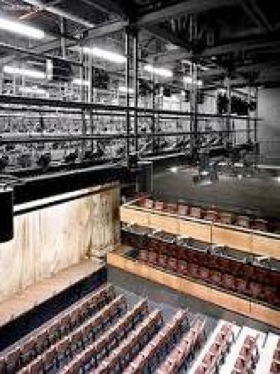
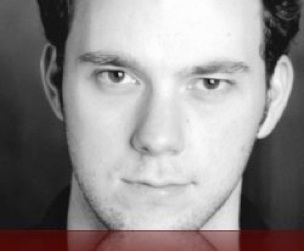




Below, birds eye view of set model. Here you can see how the set physically fits into the space and juts slightly out into the audience

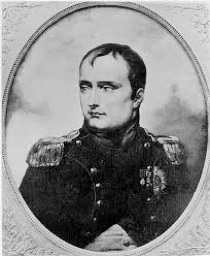
Famous Emperor, French imperialist, and syphillis carrier, Napoleon Bonaparte. Other noted carriers included Schubert and Columbus.
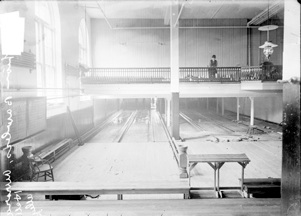
Upper left, Norwegian fiord, left, Aurora Turner Hall in Chicago where Ghosts was first performed, for an expat Norwegian audience. This is a picture of the bowling lanes, but we are not certain in which of the lanes it was performed. The play was published in 1882 but could not get produced in Europe for quite a while and was, of course, reviled by critics; always such visionaries. Naturally they would not like Ghosts; it was new and interesting. Ibsen began the first draft while living in Rome, a city with its fair share of ghosts
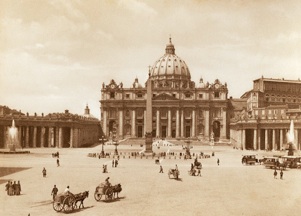
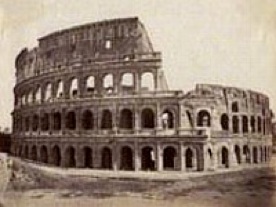
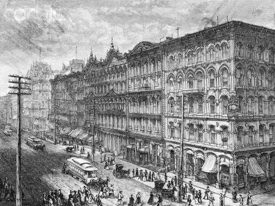
Chicago, 1880
Rome, whenever
Norway, whose Norse religion was overtaken by Christianity about 1000 AD, was, at the time of Ibsens play, a devoutly Evangelical Lutheran nation. France was not, and so men of a certain generation went there to find themselves, many found themselves in brothels or at the very least painting them. It should be no surprise that the Norwegian flag, a Nordic cross, is based on the connection between church and state. Although Norway is a secular country, nearly eighty percent of the population is Lutheran


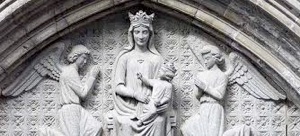
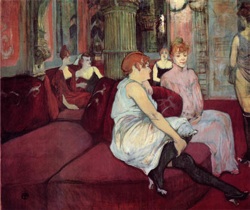


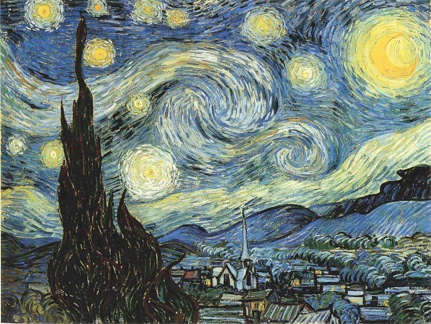
For an artist, like Osvald, in 1880, there was simply no other place to be than Paris. Of course, Paris was also a city bohemianism, and so artists and the bohemian lifestyle became easily intertwined. But of course the reality is that artists generally lived lives of deprivation, and the real hedonists were the wealthy, for whom nothing beautiful or artistic was too sacred.
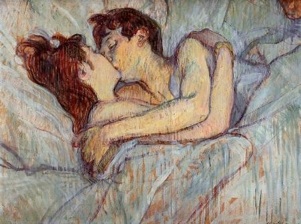
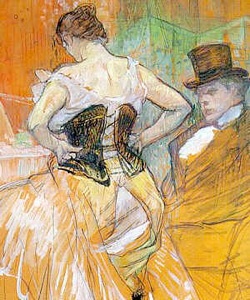

Meanwhile, back in Norway, a working person could only dream of such exploits. In fact, many chose immigration to America. Its hard to believe these days, but Scandinavia was not the wealthy place it is now, and many left for the mid-western US.
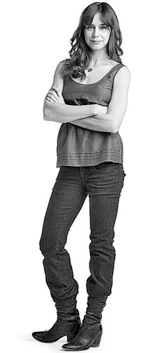

Left, a swell group of Norwegian sailors. In Ghosts, Jacob Engstrand plans to open a home for wayward sailors, and solicits his daughter to leave her servant job with Mrs. Alving and come join him. The daughter, Regina, is played by Michelle Monteith. Below, Norwegian immigrants enjoying their new life in North Dakota; a play Ibsen never wrote

This is the second Soulpepper show for Michelle but her first with us
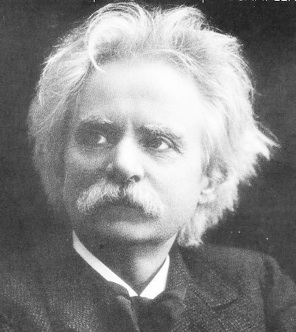
Meanwhile, back in Norway, Edvard Grieg was composing Solveigs Cradle Song, a beautiful, mournful, lullaby which we are using for the production. We like the notion of mother and child, which, in many ways, is what the story comes back to, and which gives it such heart. Pictured below, left, Joe Ziegler and right, Diego Matamoros, Joe plays Pastor Manders and Diego plays Jacob Engstrand. Along with Nancy, both actors are founding members of Soulpepper.
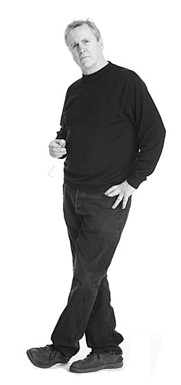
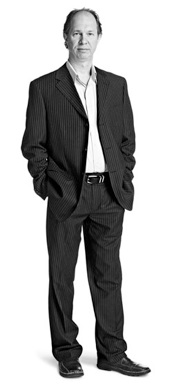

Nancy will have only just finished directing her own production of White Biting Dog when rehearsals begin for Ghosts. In a repertory season an actor can find themselves doing many shows in succession and simultaneously. Joe will follow this show with Parfumerie and Diego is concurrently performing in The Odd Couple. Busy or just crazy?
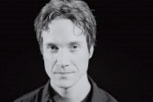
Design team for Ghosts, above, left, Thomas Ryder Payne, sound, right, Dana Osborne, costumes,
below left Alan Brodie, lights, and below, right, Ken
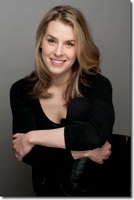


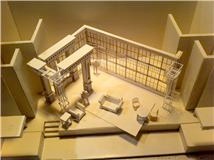
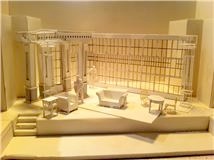
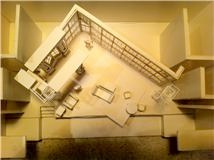
More set model angles from Ken, built by his sometime assistant, and Soulpepper Academy graduate, Ken MacKenzie, right, invaluable draftsman and interpreter of enigmatic MacDonald set designs.
First day of rehearsal is a great opportunity for the design team to show the actors and people with administrative functions their design concept for the show. Its nice when everybody is finally on the same page and has a clear idea of what the production might look, feel, and sound like. For Ken, its a chance to show off all the thought he has been putting into the concept and for Morris to begin orienting the actors toward a common idea about the play. In the first days of rehearsal there is a lot of discussion about these concepts and actors can begin to participate in helping to shape the production, integration of ideas is vital.
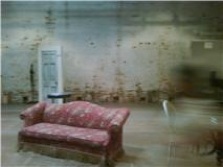
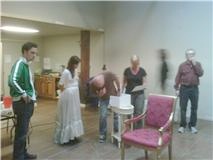
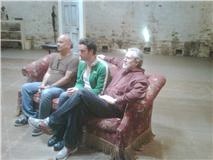
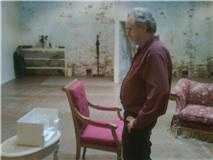
Could there be anything more exciting that actors standing around contemplating prop furniture. As rehearsals begin so begins the complex arrangement of furniture which sounds easier than it looks
For better or worse, once the furniture pieces are placed, it can sometimes be pretty much a fait accompli, as the placement will dictate, of course, the staging of the play. With experience, you can foresee problems that might arise and mitigate them by setting the furniture according to sight lines, favorable acting positions, and preferred angles of director, designer, and actor. But once the ball starts rolling and the staging advances, it becomes less and less possible to make major adjustments, so a beginning placement of furniture is crucial. Here, a discussion takes place about the staging possibilities as well as an imagined architecture for the imagined house, around which the room is built. At this point, with few exceptions, entrances and exits, as well as onstage positions, need to be anticipated and planned for. Above, left, Gregory, Michelle, and Joe, study the lay of the land as Ken makes adjustments and Arwen marks the positions on the floor. Centre, Joe, Gregory, and Ken, doing God knows what, and right, Joe looking at the set model as it relates to the actual live space; theory and reality sometimes collide.









Rehearsals start with presentations from designers, and an impressive introduction of the whole company by Albert Schultz, here talking to Morris, left, and introducing Nancy, among others. Lower, left, Ken shows the cast his set model and explains his design, and right, joins stage manager Arwen and assistant stage manager Sarah in posing with a tiny pair of scissors. Lower, right, actors join with administrative staff and technical staff to engage in a little first day levity, if for no other reason than to ease the tension of beginning work on a whole new production. Left, Dana shows Nancy a sketch for her costume and below, right, a break in first day reading when actors and other Soulpepper company members get a chance to mingle as well as make plans, perhaps, for what to do with Morris, left, when he has a complete meltdown.
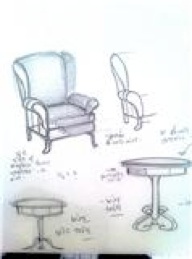


Left, Ken draws chairs and tables for the props department. Above, a rat appears at the directors table dressed as Abe Lincoln and carrying a bell, and above right, Joe and Morris break it down.
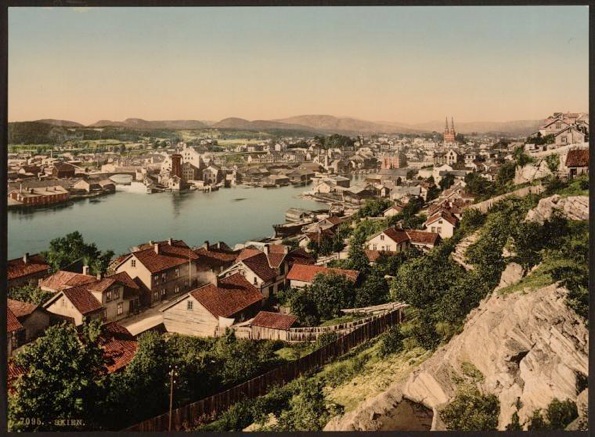
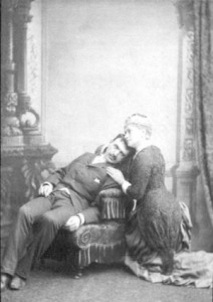
Town of Skien Norway birthplace of Henrik Ibsen, pictured here in the 1890s, a large provincial shipping town, mostly for timber, is most likely the unnamed setting for many Ibsen dramas. Henrik Ibsen's childhood home, Nordre Venstop in Gjerpen, lies slightly north of Skien, where Henrik Ibsen lived between the ages of 7 and 15 and where, as a boy, he first demonstrated his dramatic talents, staging puppet theatre family and neighbours, using plays and puppets he had made himself. Ghosts as a puppet show? Scary.
Left, photo of an early production of Ghosts, possibly Norwegian, from Ibsen.net, unattributed and right, and early manuscript of the play, in Norwegian called Gengangere, which means, literally, after walkers. It is said that Ibsen disliked the English translation of the word into Ghosts, but it seems we are now more or less stuck with it, the trick of translation is to update, not outdate, and certainly keep the spirit, if not the letter, of the original


From Sophocles onward, the family secret revealed has been a mainstay of western theatre, Hamlet to August Osage County. Left, Oedipus enucleates himself for his sins. Right Hamlet and his father; ghosts have a way of hanging around
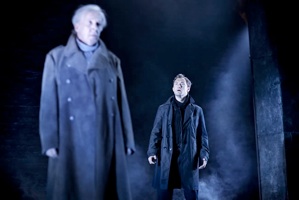
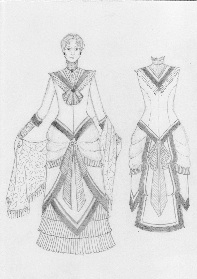



Three more Dana Osborne costume sketches, from left Michelle as Regine Engstrand, Gregory as Osvald Alving and Joe as Pastor Manders
Dana borrows from period photographs for both inspiration and detail of costumes. Her workshop at home is full of wonderful period costume books




Michelle and Nancy are fitted for their costumes, a process that involves a number of building stages until the pieces are just right. Below, Geoff Hughes from costumes.

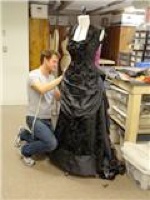
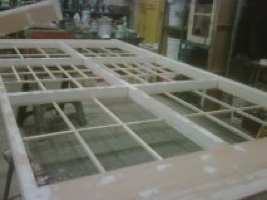
Meanwhile, right, the set begins to take shape in the shop opposite the rehearsal room. Once its assembled into pieces it can be painted. In this case, the painter will apply what is called interference to the black colour so that it picks up various other colours, and has a shimmering quality, especially apt for this show in which we want the set to appear to have a life of its own.
From shop floor to stage, set pieces are moved and assembled onstage. Here, also, adjustments are made by the director, designers, and even actors. Right, crew works on window assembly, and below, left, a tiny fly seems to have appeared in rehearsal refusing to budge from the script, could it be the ghost of Ibsen? Below, Morris and Alan Brodie confer.
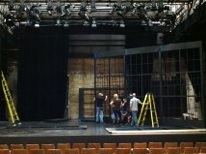
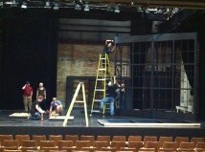
Left, and below, first day on stage, always very exciting. This is the first opportunity to see how well the show plays in the space, and to put together lights and sound. Left and below, production stills from the show in black and white. And colour shots from our technical rehearsals which continue through the entire preview week. Once audiences start to attend, the actors, the director, gain a valued fresh perspective. Sometimes an audience understands better than we think they do.

